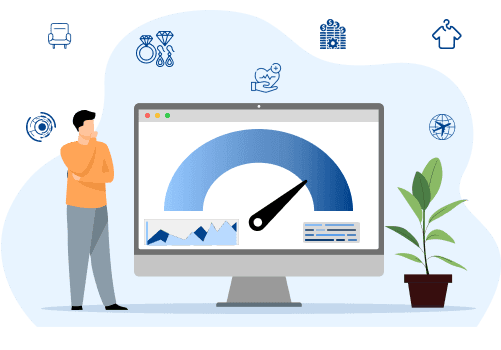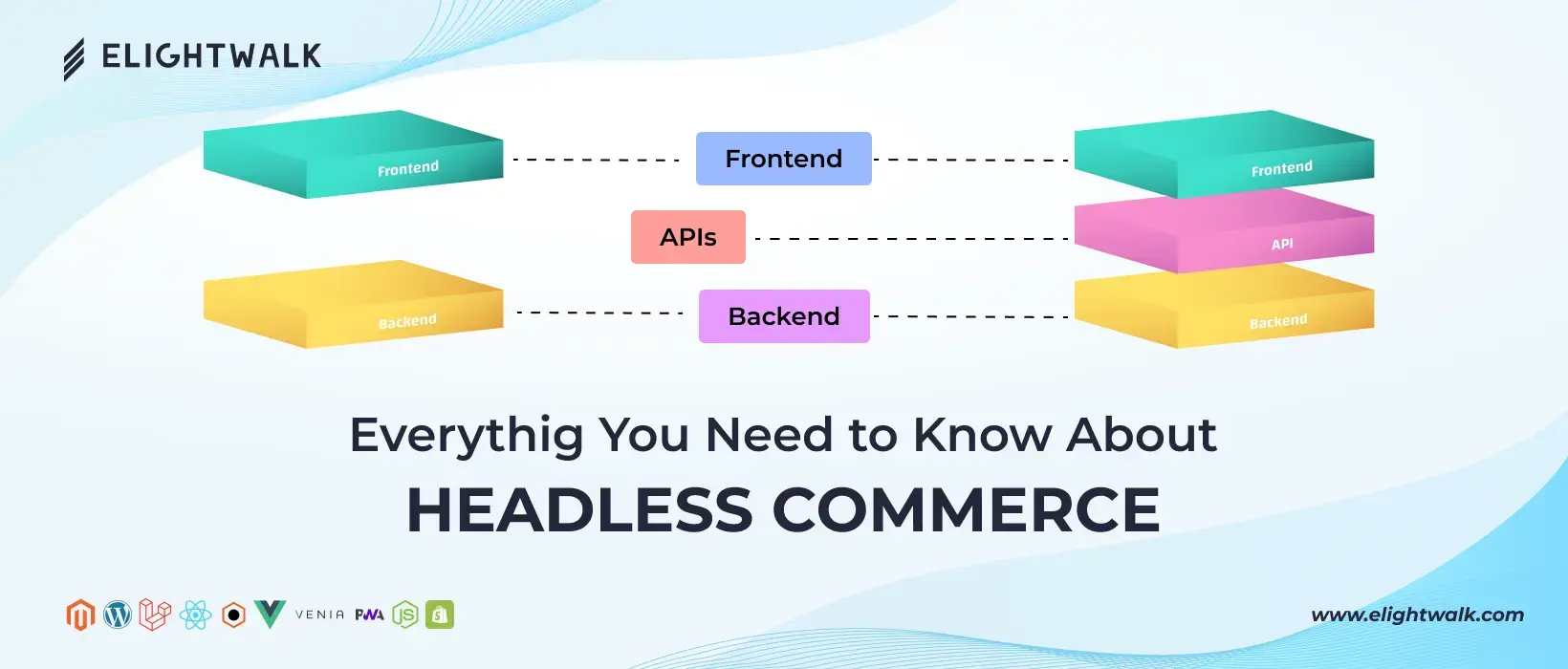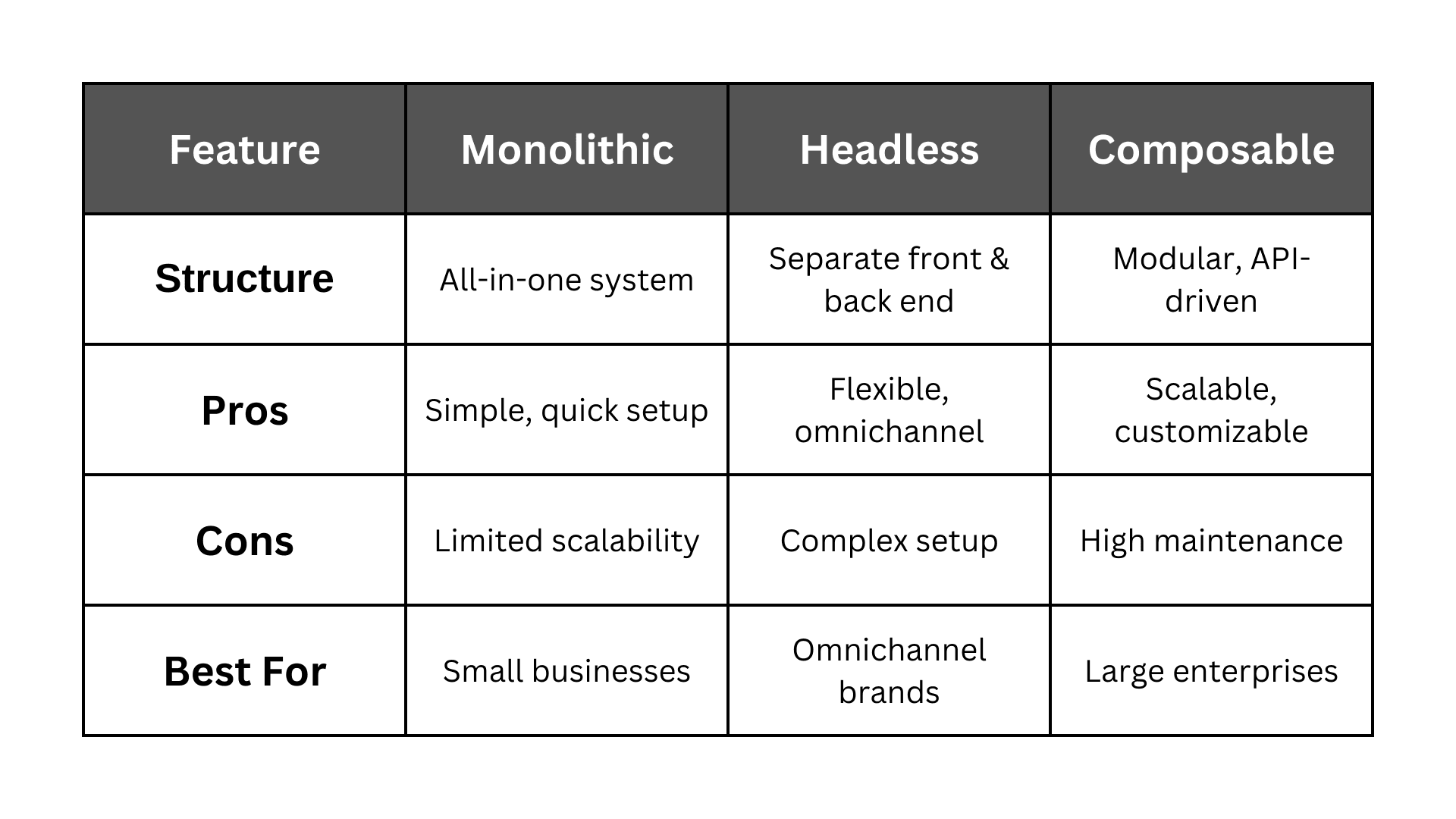Many new technologies are involved, and they directly shape this change in perspective. The sectors involved keep growing as they use strong technologies and applications. This boosts effectiveness, increases customer satisfaction, and helps monitor competitors.
1. Artificial Intelligence (AI) and Machine Learning
AI and machine learning help headless commerce to create personalized shopping experiences. They also enable businesses to operate efficiently and make informed decisions. The significant applications of these technologies are as follows:
- Personalized Recommendations: The AI-powered system analyzes a customer's purchases to suggest items they may like, increasing sales and engagement.
- Dynamic Pricing: Machine learning enables businesses to adjust prices based on demand, promotional events, or inventory levels.
- Chatbots and Virtual Assistants: AI-driven bots provide automated customer support, resolving issues and assisting with purchases.
2. Voice Commerce and Conversational AI
Voice commerce is a hot topic right now. It grows stronger daily thanks to smart speakers and popular voice assistants like Amazon Alexa and Google Assistant. Headless commerce architecture connects to voice-enabled devices, allowing customers to shop, order products, and track deliveries using voice commands.
3. Augmented Reality (AR) and Virtual Reality (VR)
AR and VR technologies are revolutionizing e-commerce by offering interactive and immersive shopping experiences:
- Virtual Try-Ons: Customers can visualize how clothing, accessories, or furniture will look before purchasing.
- 3D Product Views: Provides a detailed, interactive look at products, reducing uncertainty and minimizing returns.
4. Internet of Things (IoT)
IoT-connected devices expand headless commerce by enabling automated transactions:
- Smart Refrigerators: Automatically reorder groceries when stock runs low.
- Wearable Devices: Smartwatches and fitness trackers streamline purchases with seamless device integration.
5. Blockchain and Decentralized Commerce
Blockchain technology enhances security and transparency in e-commerce:
- Protected Payments: Decentralized transactions reduce fraud and enhance security.
- Smart Contracts: Automates supply chains, reducing intermediaries and improving efficiency.
6. Progressive Web Apps (PWAs)
PWAs blend the best of mobile apps and websites, making them essential for headless commerce:
- Improved Mobile Shopping: Faster load times and offline browsing enhance user experience.
- Reduced Development Costs: A single PWA works across multiple platforms, reducing maintenance expenses.
7. API-Driven Ecosystems
APIs are the backbone of headless commerce, enabling seamless service integration:
- Third-Party Marketplaces: Easily sync with Amazon, eBay, and social commerce platforms.
- Consistent Shopping Experiences: Ensures seamless interaction across web, mobile, and in-store touchpoints.
8. Hyper-Personalization with Customer Data Platforms (CDPs)
CDPs unify customer data across touchpoints, enhancing personalization:
- Real-Time Customer Insights: Improves targeting and engagement strategies.
- Seamless Omnichannel Experiences: Ensures a unified shopping experience across different platforms.
9. Sustainability and Ethical Commerce
With rising consumer awareness, businesses are embracing sustainability through headless commerce:
- Eco-Friendly Product Recommendations: AI suggests sustainable alternatives.
- Supply Chain Transparency: Blockchain ensures ethical sourcing and fair trade compliance.
Personalization, efficiency, and security are key tech breakthroughs that can transform headless commerce's future. Brands leveraging AI, machine learning, voice commerce, AR/VR, IoT, and blockchain will gain a competitive edge by offering seamless and unique shopping experiences.





